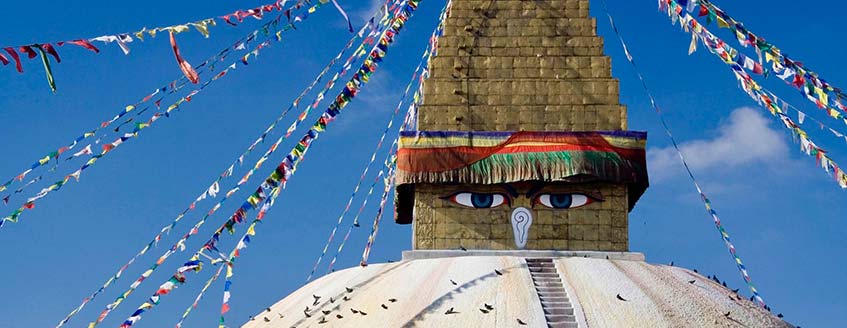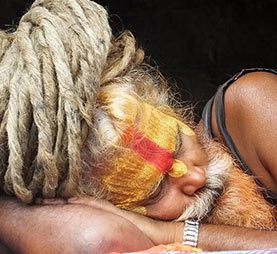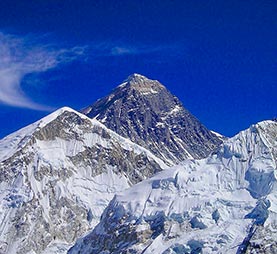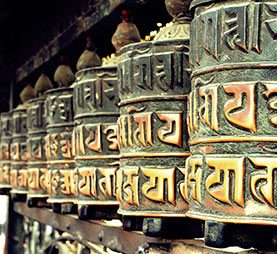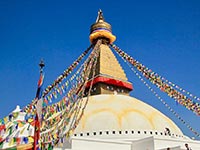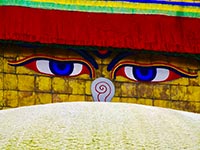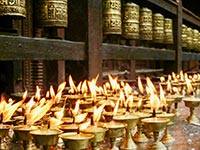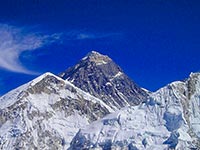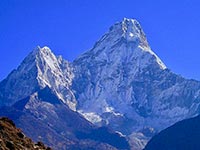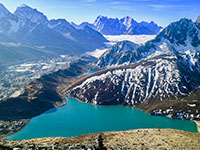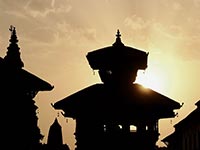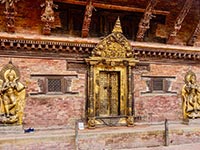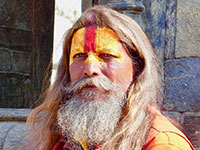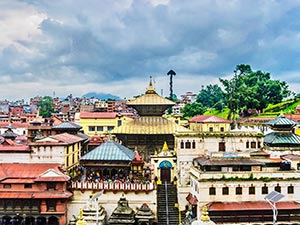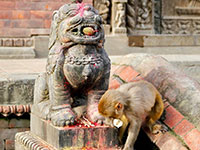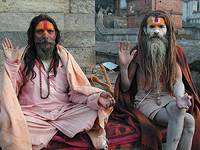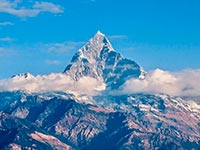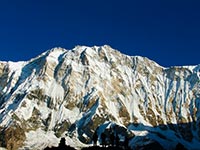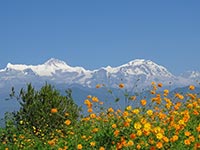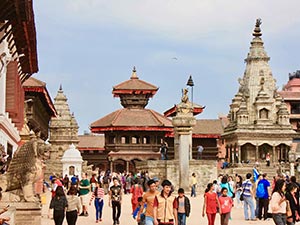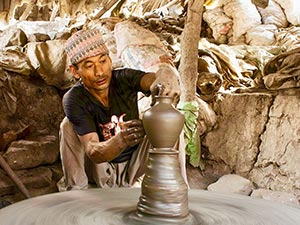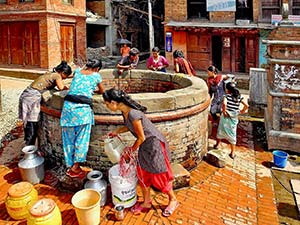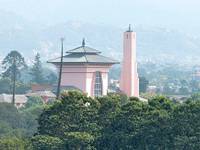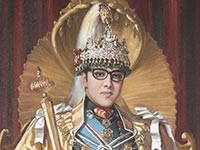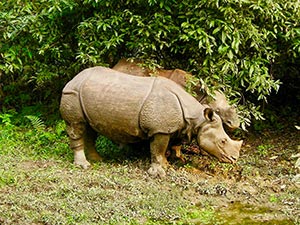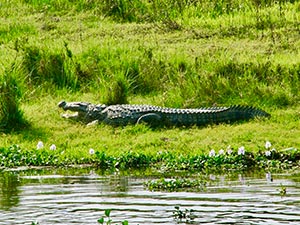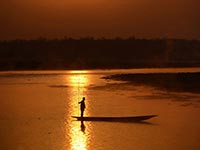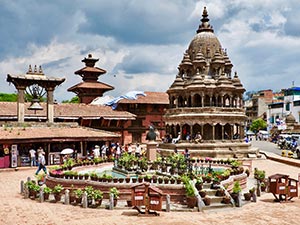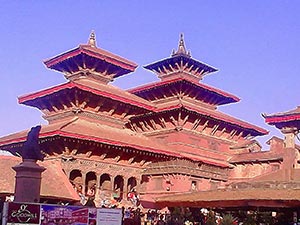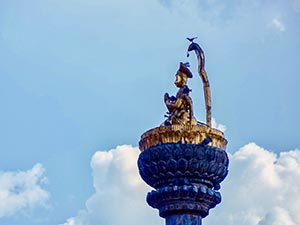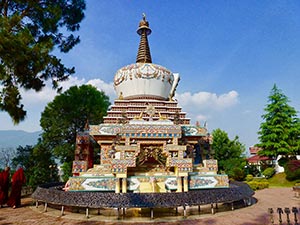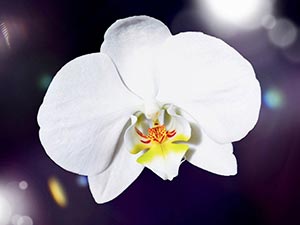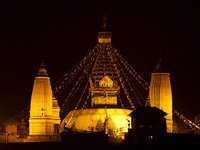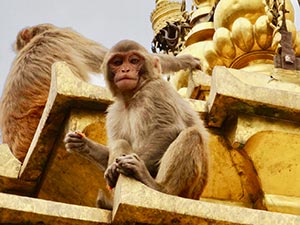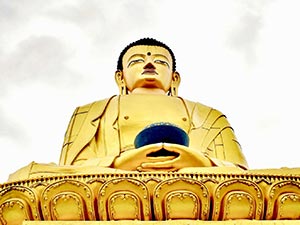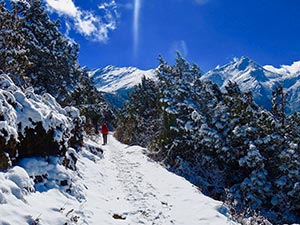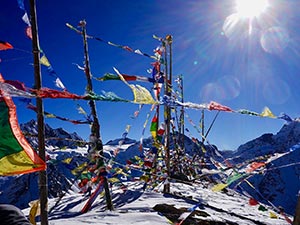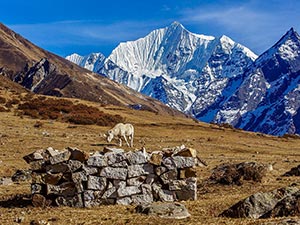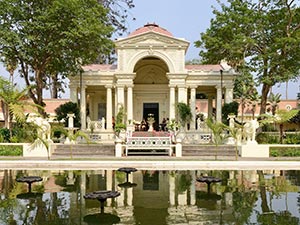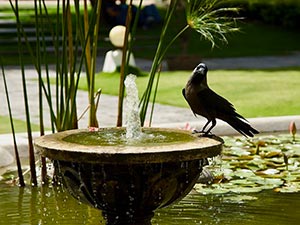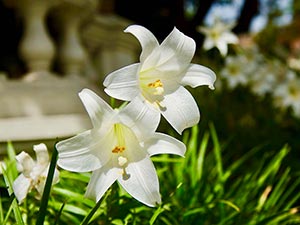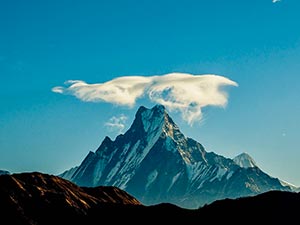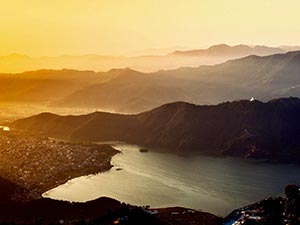Things to do in Kathmandu, NEPAL
Kathmandu, Nepal's capital, is a vibrant, noisy city. Packed full of history, palaces and temples, it is also within touching distance of Nepal's premier attraction: the Himalaya.
Kathmandu is home to places to visit like Durbar Square (with temples dating back to the 12th century), Boudhanath Stupa (a world heritage site), and Pashupatinath Temple (the country's most important Hindu temple, on the banks of the Bagmati river).
Another must-see attraction is the Royal Palace, the site of the infamous 2001 massacre of the Royal Family by the then Crown Prince, and now converted into the Narayanhiti Palace Museum.
Kathmandu is also the travel gateway to the rest of Nepal—in particular the tranquil Bhaktapur, the temple-tastic Patan, the Chitwan National Park, and, of course, the Himalaya.
The mountains hold a magnetic attraction for many who visit Nepal, with half of the world's 8,000 metre mountains found here. The trek to Everest base camp, a two-week trip starting with a nerve-racking flight to Lukla airport, is the most popular mountain activity, whilst the stunningly beautiful Annapurna base camp can be achieved by a 7-10 day trek from Pokhara.
Kathmandu, and most of Nepal, have now recovered from the April 2015 earthquake that claimed over 9,000 lives. Tourist numbers in September 2018 were 33.7% up on figures for September 2017, thanks largely to visitors from India and China. And the first quarter of 2019 showed a 15.3% tourist rise on the previous year.
1. Boudhanath Stupa
The Boudhanath stupa is one of the holiest and most recognisable sites in Kathmandu.
Assigned UNESCO world heritage status in 1979, Boudhanath (aka the Boudha, Chorten Chempo and Khasa Caityais) has a diameter of 120 metres, making it the largest temple in Nepal.
The stupa is built on an octagonal base, surrounded by 147 prayer wheels and 108 images of Buddhist deities. It has colourful prayer flags, blessed with juniper incense each new year, draped from its 36-metre central spire.
All this helps to make the temple one of Kathmandu's most iconic and photographed sites.
Symbolism
Boudhanath is rich in symbolism. It has:
- five statues of Dhyani Buddhas, representing the five elements (earth, fire, water, air and ether);
- nine levels, representing Mount Meru (the mythical peak at the centre of the Buddhist cosmos); and
- 13 rings from its base to its apex (representing the steps to enlightenment or Nirvana).
Boudhanath is the religious centre of Nepal's Tibetan/Buddhist community, and is surrounded by around 50 monasteries (home to high-ranking rinpoches or lamas) and shops settling Tibetan artifacts. About 15% of the Nepalese population are Buddhists.
Tibetan Monks
Look out for Tibetan monks, with shaven heads and maroon robes, and pilgrims spinning prayer wheels and buying yak butter and tsampa (roasted barley flour). Be careful to observe Tibetan custom by walking around the stupa in a clockwise direction.
There has been a stupa on this site since Tibetan king Songsten Gampo converted to Buddhism in around 600 AD. The stupa was heavily damaged in the 2015 earthquake. It re-opened, following extensive repairs, at a three-day purification ceremony held in November 2018.
where? Buddha Stupa, Sundhara Marg, Kathmandu 44600, Nepal. MAP
when? Late afternoon is the best time to visit, after tour groups have departed. The Losar (Tibetan New Year) celebrations are held here in February or March.
£$€¥ Rs 400 (foreigners); Rs 100 (SAARC). (Dec 2019)
2. Everest Region
The 1,500 mile long Himalaya range contains every one of the world's fourteen 8000 metre peaks.
Nepal is home to eight of those giants: Everest (8848 m), Kanchenjunga (8586 m), Lhotse (8516 m), Makalu (8485 m), Cho Oyu (8,201 m), Dhaulagiri I (8,167 m), Manaslu (8163 m) and Annapurna I (8109 m).
The rest are found in Pakistan (K2, Nanga Parbat and Gasherbrum I and II) and China (Shishipangma and Broad Peak).
The worst part?
The Everest region is accessed by a nerve-racking 30 minute flight in a tiny plane to the Tenzing-Hillary airport (2860 m, aka Lukla airport).
The landing in scary! Don't believe us? Check out this YouTube video.
From there, walkers and climbers trek for two days to the main town in the Everest region, Namche Bazaar (3,440 m, offering accommodation, good food, internet cafes, a bank and post office, and equipment shops).
Everest Base Camp
Everest base camp is about another week away, bearing in mind that ascent must be taken slowly because of the altitude. It is reached after overnight stops at small settlements called Tengboche (3870m), Pheriche (4240m), Duglha (4620m), Lobuche (4930m) and Gorak Shep (5160m).
Be warned: the last portion of the trek to Namche is particularly gruelling (though you'll see your first glimpses of Everet and Lhotse).
From base camp, trekkers can summit the 5545 metre Kala Patthar, which offers great views of Everest, Lhotse and Nuptse (7816 m).
Climbing Mount Everest
Trekkers may also be lucky enough to observe Everest climbers, acclimatising themselves for the trip to the top of the world via the deadly Khumbu icefalls (5,486 m), four further high camps, the South Col (7,906 m) and the Hillary Step (a 12-metre rock wall at 8,760 m).
Everest has reopened to climbers and trekkers following the April 2015 earthquake, which claimed the lives of 19 people attempting to reach the summit. 2016 and 2017 saw a number of successful summit attempts.
Read about Climbing Mount Everest
There's more ...
The Everest region's other attractions include:
- interacting with Sherpas, traders who settled here in the 16th century and have since become adept mountain guides and high altitude porters;
- the local fauna, including the sometimes cantakerous yaks used to transport supplies and luggage; and
- the local flora, such as blue pine forests, rhododendron, juniper, birch and oak.
3. Durbar Square
Even though the Nepali royal family moved from the Hanuman Dhoka palace about a century ago, Durbar (Palace) Square remains the tourist heart of Kathmandu.
Most visitors are surprised by the sheer number of temples surrounding the square, and the two adjoining squares, some dating back to the 12th century.
The jewels in the crown are:
- the Hanuman Dhoka itself (the complex of royal palaces),
- the magnificent Taleju Temple (built in 1564 by Mahendra Malla, standing on a 12-stage plinth, and reaching 35 metres in height), and
- the Kumari Bahal (an intricately carved three-storey structure built in 1757 in which the 'living godess', a young girl selected from the Kathmandu valley, still lives).
Other must-sees are the Kasthamandap (aka the 'Pavilion of wood', the building after which Kathmandu was named and which, legend has it, was constructed using a single sal tree) and the Maju Deval (a triple-roofed Shiva temple dating from 1690, built by the mother of Bhaktapur's king Bhupatindra Malla).
Durbar Square has still not been restored to its former glory following the 2015 earthquake. Many foreign visitors also remark on the steep Rs1000 entrance fee.
when? All year round.
where? Durbar Square is located to the west of Kathmandu's recreation ground and the south-west of the Royal Palace. MAP
£$€¥ Foreigners: Rs1000; SAARC: Rs150. (Dec 2019)
